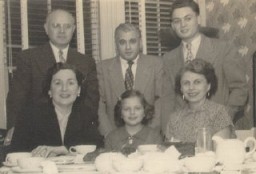You searched for: 数字货币游戏,加密货币游戏,数字币游戏,ust博彩游戏,【www.2266.com,复制打开网址】,unit泰达币博彩网站,区块链游戏排名,区块链游戏nft,区块链游戏平台,nft游戏有哪些,nft是什么游戏,以太坊游戏,区块链游戏赚钱网站,币圈游戏,区块链博彩平台,网址kaefhfkccdckbghcd
<< Previous | Displaying results 1-50 of 1750 for "数字货币游戏,加密货币游戏,数字币游戏,ust博彩游戏,【www.2266.com,复制打开网址】,unit泰达币博彩网站,区块链游戏排名,区块链游戏nft,区块链游戏平台,nft游戏有哪些,nft是什么游戏,以太坊游戏,区块链游戏赚钱网站,币圈游戏,区块链博彩平台,网址kaefhfkccdckbghcd" | Next >>
-
Recognition of US Liberating Army Units
ArticleLearn about US Army Divisions that have been recognized as liberating units by the United States Holocaust Memorial Museum and the US Army's Center of Military History.

-
The United States and the Holocaust
ArticleHow did the United States respond to the Holocaust and World War II? Start learning today.

-
The United States: Isolation-Intervention
ArticleWhen WWII began, most Americans wanted the US to stay isolated from the war. From December 1941, the majority rallied in support of intervention to defeat the Axis powers.
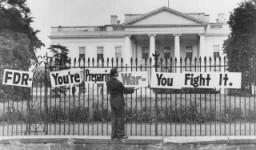
-
Immigration to the United States 1933–41
ArticlePotential immigrants to the US from Nazi-occupied territory faced many obstacles, including restrictive quotas and complicated requirements for obtaining visas.
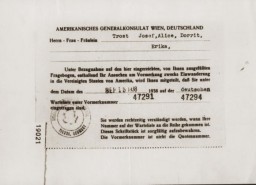
-
The United States and the Holocaust, 1942–45
ArticleWhy did the United States go to war? What did Americans know about the “Final Solution”? How did Americans respond to news about the Holocaust? Learn more.
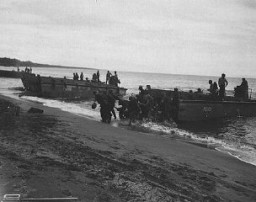
-
The United States Army Signal Corps
ArticleThe US Army Signal Corps had a crucial role in documenting—in both film and photographs—the atrocities perpetrated during the Holocaust.
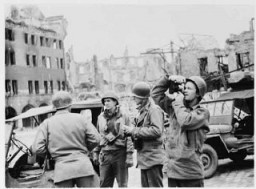
-
The Immigration of Refugee Children to the United States
ArticleMore than one thousand unaccompanied refugee children fleeing Nazi persecution arrived in the United States between 1933 and 1945. Learn more
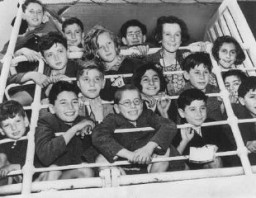
-
United States Immigration and Refugee Law, 1921–1980
ArticleUS immigration and refugee laws and policies evolved in response to World War I, the 1918 influenza pandemic, and World War II and the Holocaust. Learn more.
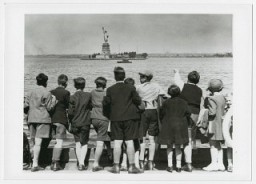
-
The United States and the Holocaust: Why Auschwitz was not Bombed
ArticleThe Allied decision not to bomb the gas chambers in or the rail lines leading to Auschwitz-Birkenau has been a source of sometimes bitter debate. Learn more.
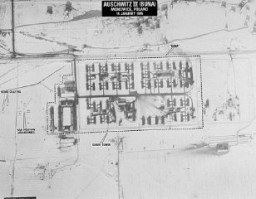
-
The United States and the Refugee Crisis, 1938–41
ArticleNazi Germany’s territorial expansion and the radicalization of Nazi anti-Jewish policies triggered a mass exodus. Learn about the US and the refugee crisis of 1938–41.
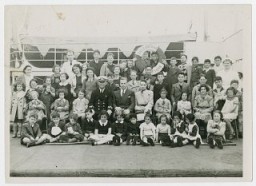
-
The United States and the Nazi Threat: 1933–37
ArticleLearn about responses in the United States to reports about Nazi anti-Jewish policies and violence against Jews from 1933–37.
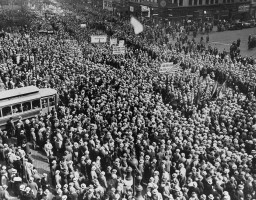
-
History of the United States Holocaust Memorial Museum
ArticleThe United States Holocaust Memorial Museum opened in April 1993. Explore the history of the nation's memorial to the millions murdered during the Holocaust.
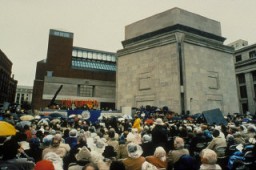
-
United Nations Relief and Rehabilitation Administration
ArticleThe United Nations Relief and Rehabilitation Administration’s mission was to provide economic aid to European nations and assist refugees after World War II.
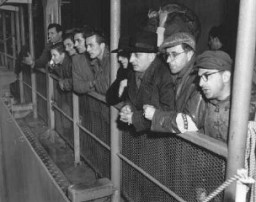
-
Einsatzgruppen and other SS and Police Units in the Soviet Union
ArticleLearn more about how and why Nazi German SS and police units, including the Einsatzgruppen, perpetrated mass killings of Jews in the occupied-Soviet Union.
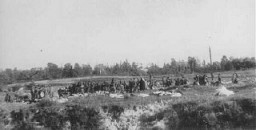
-
Relatives in the United States
PhotoAbraham Kaplan and his wife Maria at their home in Paterson, New Jersey. He was the half brother of Blanka's grandmother. Blanka lived with Abraham and Maria when she came to the United States. She loved them dearly.
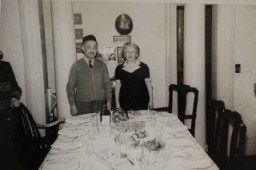
-
Antisemitic poster in the United States
PhotoAntisemitic poster equating Jews with communism. The poster calls for the boycotting of Jewish interests. United States, 1939.
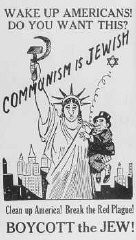
-
Antisemitic propaganda in the United States
PhotoAntisemitic propaganda in the United States that presents President Franklin D. Roosevelt's declaration of a state of unlimited national emergency as the product of an international Jewish conspiracy to save world Jewry and to bring destruction upon America. United States, ca. 1938–41. Among the antisemitic declarations on the caricature are: "Jews Are The Cause of High Taxes - Slavery - Starvation and Death ---" "How long will the American people continue to tolerate this…
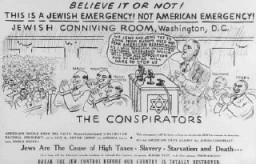
-
Segregated fountain in the United States
PhotoA segregated drinking fountain on the county courthouse lawn in Halifax, North Carolina. Photographed by John Vachon in April 1938.

-
Segregation in the United States
PhotoA segregated drinking fountain on the county courthouse lawn in Halifax, North Carolina. Photographed by John Vachon in April 1938.
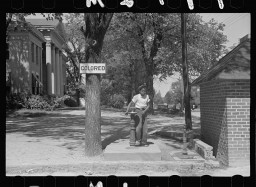
-
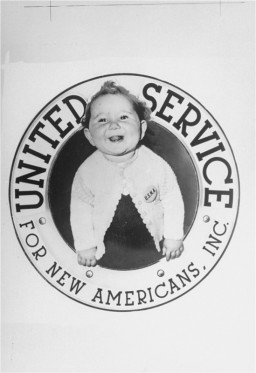
-

-
Class for new immigrants in the United States
PhotoA class for new immigrants in the United States. Postwar.
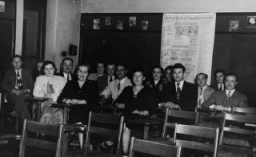
-
United States Senator William Proxmire
PhotoWilliam Proxmire (1915–2005) served in the United States Senate for the state of Wisconsin from 1957 to 1989. Senator Proxmire was one of the strongest advocates for the UN Convention on the Prevention and Punishment of Genocide, which was ratified by the United States in 1988.
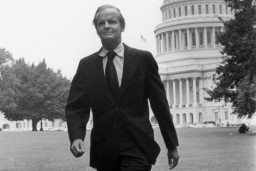
-
UNRRA conference convenes in the United States
FilmThe United Nations Relief and Rehabilitation Administration (UNRRA) was established in November 1943 to aid refugees fleeing Axis aggression. After World War II, UNRRA sought to assist millions of refugees displaced by the war and its consequences. In the aftermath of the war, worldwide food shortages threatened millions with starvation and the world looked to the United States for assistance. In this footage, UNRRA's fourth council meeting convenes in Atlantic City. Director-General Herbert H. Lehman…
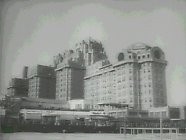
-

-
Partisan unit in the Parczew Forest
PhotoGeneral Michael (Rola) Zymierski (top row, center), commander of the Polish communist Armia Ludowa, poses with a partisan unit in the Parczew Forest. The partisan unit includes the Jewish physician, Michael Temchin (bottom right).
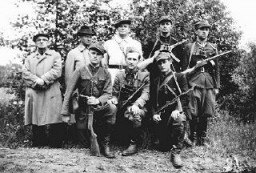
-
Surrender of German and Hungarian Units
Timeline EventFebruary 13, 1945. On this date, Soviet troops accepted the surrender of the last German and Hungarian troops in Budapest.
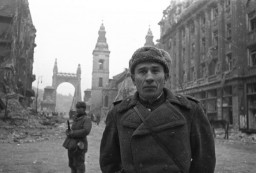
-
Norman Salsitz in the United States
PhotoNorman (with camera) in the United States. August 1948. With the end of World War II and collapse of the Nazi regime, survivors of the Holocaust faced the daunting task of rebuilding their lives. With little in the way of financial resources and few, if any, surviving family members, most eventually emigrated from Europe to start their lives again. Between 1945 and 1952, more than 80,000 Holocaust survivors immigrated to the United States. Norman was one of them.
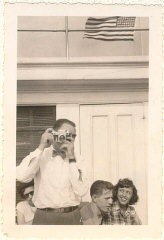
-
Unit of Soviet soldiers
PhotoA unit of Soviet soldiers walks along a narrow strip of land that juts into the water while on a reconnaissance mission in Murmansk. Photograph taken by Soviet photographer Yevgeny Khaldei. Murmansk, Soviet Union, 1941.
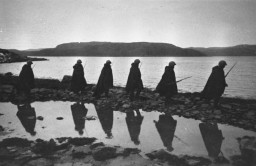
-
Displaced persons leave for the United States
FilmAt the end of World War II, the Allied powers in Europe repatriated from Germany millions of displaced persons (DPs). The remaining 1.5 to 2 million DPs—both Jews and non-Jews—refused or were unable to return to their prewar homes. Immigration restrictions precluded the large-scale admission of these refugees to other European countries and the United States. They remained in occupied Germany until they could arrange to settle in another country. In this footage, filmed more than four years…
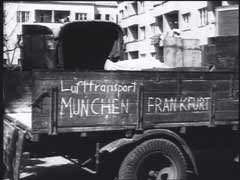
-
The United States and the Holocaust
SeriesHow did the United States respond to the rise of the Nazis in 1930s Germany? What did the US government know about the Nazi persecution of Jews and the “Final Solution”? Learn more
-
Construction of the United States Holocaust Memorial Museum
PhotoInstallation of the railcar at the construction site of the United States Holocaust Memorial Museum. Washington, DC, February 9, 1991.

-
Dedication of the United States Holocaust Memorial Museum
PhotoA large crowd fills Eisenhower Plaza during the dedication ceremony of the United States Holocaust Memorial Museum. Flags of the liberating divisions form the backdrop to the opening ceremony. Washington, DC, April 22, 1993.

-
An interior bridge at the United States Holocaust Memorial Museum
PhotoDetail of an interior bridge at the United States Holocaust Memorial Museum with the names of victims etched in glass. Washington, DC, 1996.
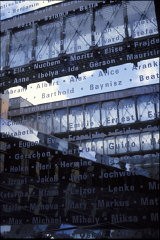
-
Jewish refugee children arrive in the United Kingdom
PhotoJewish refugee children—part of a Children's Transport (Kindertransport)—from Vienna, Austria, arrive at Harwich. Great Britain, December 12, 1938.
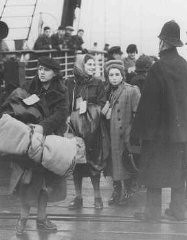
-
Austrian Jewish refugee children arrive in the United Kingdom
PhotoAustrian Jewish refugee children, members of one of the Children's Transports (Kindertransport), arrive at a London train station. Great Britain, February 2, 1939.
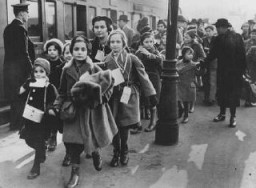
-
Opening day of the United States Holocaust Memorial Museum
PhotoPresident Bill Clinton (center), Elie Wiesel (right), and Harvey Meyerhoff (left) light the eternal flame outside on the Eisenhower Plaza during the dedication ceremony of the United States Holocaust Memorial Museum. April 22, 1993.
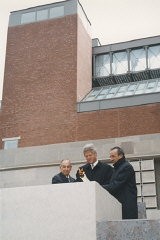
-
Jewish refugee children arrive in the United Kingdom
PhotoJewish refugee children, part of a Children's Transport (Kindertransport) from Germany, upon arrival in Harwich. Great Britain, December 12, 1938.
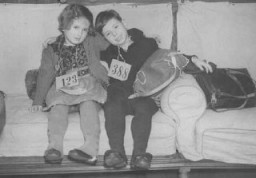
-
Jewish members of a unit of the Armée Juive
PhotoA group of Jewish partisans, members of a unit of the Armée Juive (Jewish Army). France, wartime.
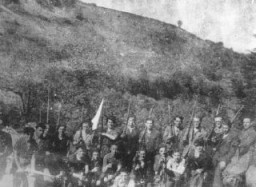
-
US Army unit at Camp Ritchie
PhotoOtto Perl poses with his US Army unit at Camp Ritchie, Maryland, circa 1945. Born in Austria, Perl served in the Austrian Army until March 1938, when he was dismissed because he was Jewish. With the help of a friend, Perl was able to obtain a US visa. He reached New York in 1940. Several thousand of the soldiers who trained at Camp Ritchie were Jewish refugees who had immigrated to the United States to escape Nazi persecution.
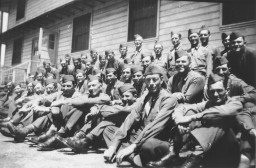
-
Section of the United States Holocaust Memorial Museum's main exhibition
PhotoView of the photo mural of a selection at Auschwitz-Birkenau taken through the open railcar on the third floor of the Permanent Exhibition at the United States Holocaust Memorial Museum. Washington, DC, 1993–95.
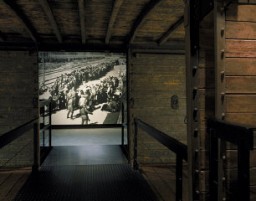
-
Architectural details in the United States Holocaust Memorial Museum.
PhotoArchitectural details in the third floor lounge in the United States Holocaust Memorial Museum.

-
Beifeld album page showing a medical unit
ArtifactWatercolor depicting Hungarian soldiers from a medical unit moving into a Russian village and setting up operations, April 10, 1943. [Photograph #58122]
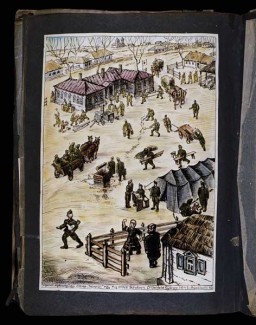
-
Heinrich Himmler reviews a unit of SS-police in Krakow
PhotoSS chief Heinrich Himmler reviews a unit of SS-police in Krakow, Poland, March 13, 1942.
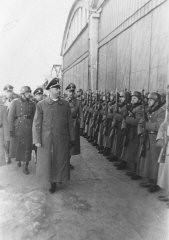
-
Thomas Buergenthal after arriving in the United States
PhotoThomas (standing, right), then known as "Tommy," with relatives shortly after arriving in the United States. New Jersey, ca. 1952. With the end of World War II and collapse of the Nazi regime, survivors of the Holocaust faced the daunting task of rebuilding their lives. With little in the way of financial resources and few, if any, surviving family members, most eventually emigrated from Europe to start their lives again. Between 1945 and 1952, more than 80,000 Holocaust survivors immigrated to the United…
